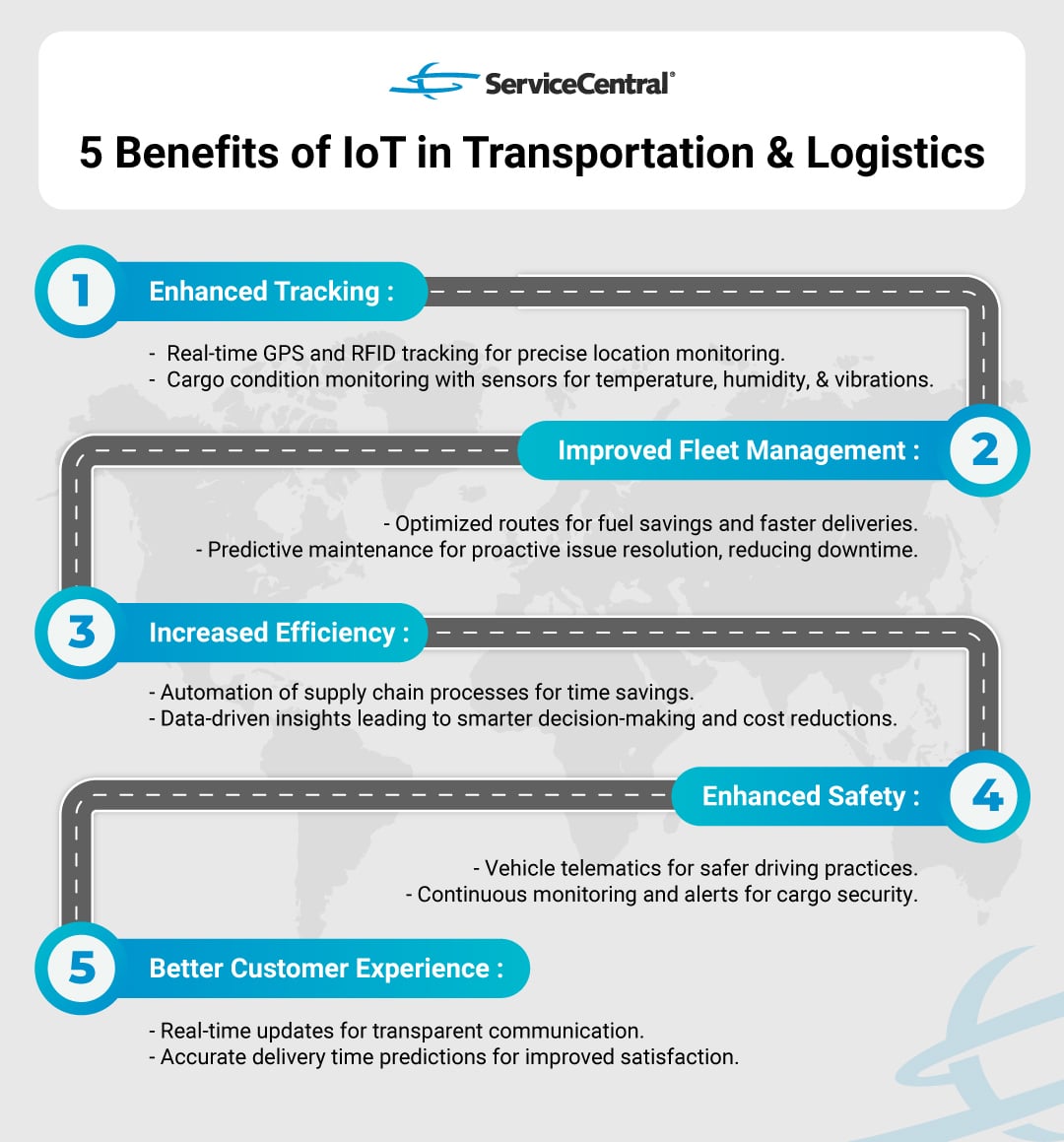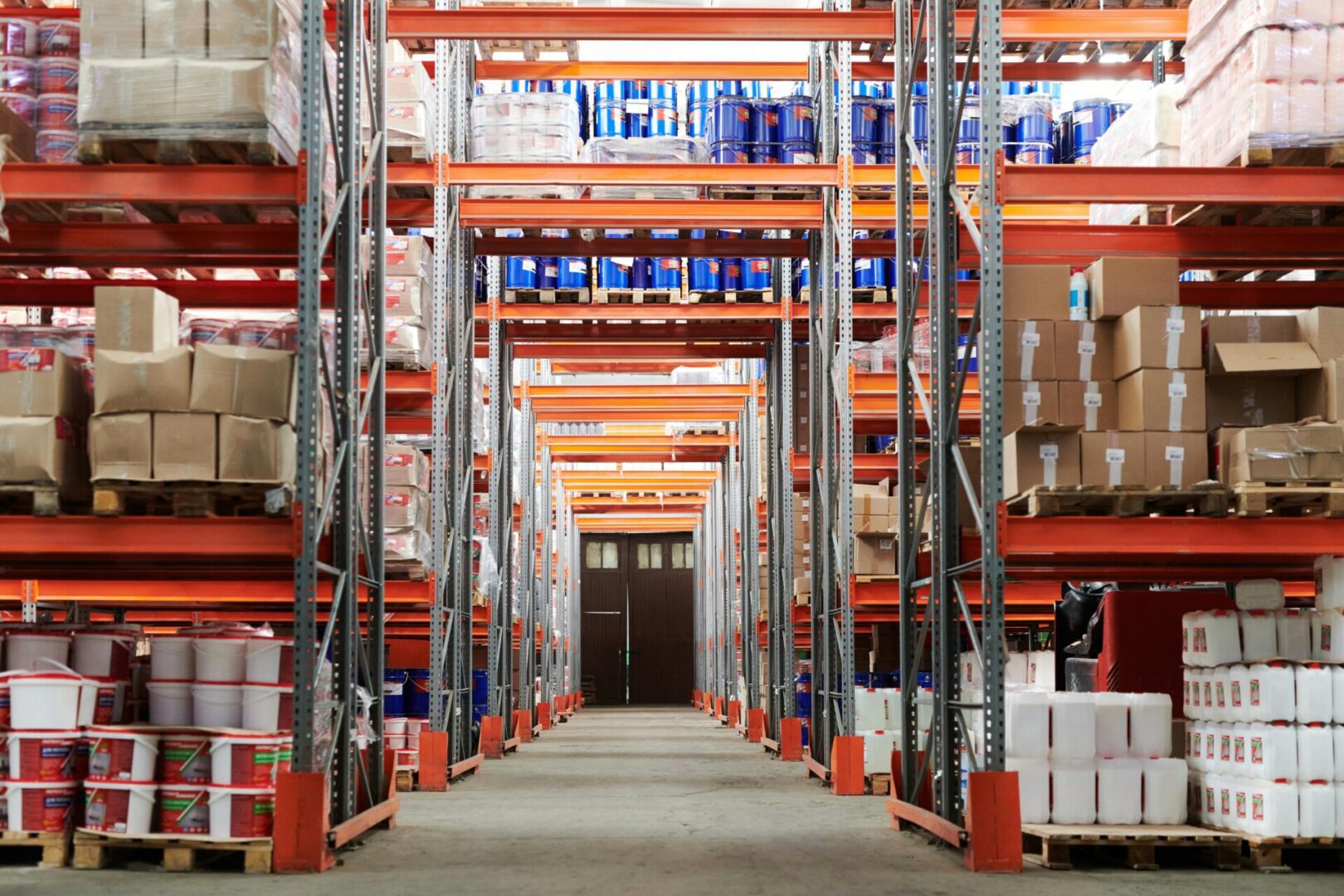The introduction of IoT marks a significant milestone in the digital revolution, offering limitless possibilities for innovation and efficiency. In this blog, we search deeper into the power of IoT in transportation and logistics; we will uncover how it is reshaping this industry, making operations more efficient, transparent, and customer-centric. Let’s get started!
Understanding the Internet of Things (IoT)
The Internet of Things (IoT) has emerged as a revolutionary concept, intertwining the physical and digital worlds in unprecedented ways. At its core, IoT refers to a network of interconnected devices that communicate and exchange data without human intervention. These devices, ranging from simple sensors to complex machines, are embedded with technology that allows them to send and receive data over the Internet.
Historical Context and Evolution
The journey of IoT can be traced back to the early days of the internet and computing. However, the term ‘Internet of Things’ was coined in 1999 by Kevin Ashton during his work at Procter & Gamble. Initially, the concept was tightly linked to using RFID technology for supply chain management. As technology progressed, the scope of IoT expanded dramatically, riding on the waves of advancements in wireless technology, sensor technology, and cloud computing. The early 2000s saw the concept of IoT transitioning from theory to practice, with the proliferation of smartphones and wireless internet providing the necessary infrastructure for IoT to flourish. The number of connected devices began to soar, and the potential applications of IoT expanded into various sectors, including healthcare, agriculture, smart homes, and transportation and logistics.
IoT Today: A Technological Behemoth
Today, IoT stands as a colossal and rapidly growing field. According to estimates by Statista, the number of IoT devices worldwide is expected to reach 30.9 billion units by 2025. This explosive growth is fueled by the decreasing costs of sensors and connectivity and an increasing awareness of the benefits IoT brings to various industries. The modern IoT ecosystem is a complex network of devices, platforms, and software. It encompasses everything from simple household gadgets like smart thermostats to sophisticated industrial tools like remote sensors for monitoring manufacturing processes. Cloud computing plays a pivotal role in IoT, offering the necessary computing power and storage capacity to handle the massive amounts of data generated by IoT devices.
IoT: The Intersection of Multiple Technologies
The true power of IoT lies in its ability to bring together multiple technological domains. It stands at the convergence of advanced analytics, big data, cloud computing, and artificial intelligence (AI). Integrating these technologies allows for the transformation of raw data collected by IoT devices into actionable insights, driving efficiency and innovation in various fields. For instance, IoT devices can collect data on vehicle locations, traffic conditions, and cargo temperatures in transportation and logistics. When combined with AI and analytics, this data can optimize routes, predict maintenance needs, and ensure the quality of goods in transit, transforming how logistics companies operate.
Overview of the Transportation and Logistics Industry
Transportation and logistics form the backbone of the global economy, enabling the flow of goods from manufacturers to consumers across continents. This industry encompasses a wide range of activities – from the management of supply chains, warehousing, and inventory to the actual movement of goods via road, rail, air, and sea. It is a complex, dynamic field essential to the functioning of virtually every other industry, playing a crucial role in sustaining global markets and supporting international trade.
The Scale and Complexity
The sheer scale and complexity of the transportation and logistics industry are staggering. It involves a vast array of players, including shipping companies, freight forwarders, couriers, warehousing providers, and many others. Millions of shipments are processed, tracked, and delivered daily, requiring intricate coordination and efficient management. This sector is not only about physical transportation but also about information flow, financial transactions, and the management of supply chains.
Key Challenges Faced
The industry faces several significant challenges, some of which include:
- Efficiency and Cost Management: Managing operational costs while maintaining efficiency is a constant struggle. Fuel costs, vehicle maintenance, labor costs, and regulatory compliance all add to the financial burden.
- Supply Chain Visibility: Ensuring visibility across the entire supply chain is crucial for timely deliveries and risk management. However, achieving complete transparency is challenging due to the involvement of multiple stakeholders and varying levels of technology adoption.
- Customer Expectations: In an age where same-day delivery is becoming the norm, there is increasing pressure on logistics companies to deliver faster, more reliably, and at a lower cost.
- Environmental Concerns: With growing awareness of environmental issues, the industry is pressured to reduce its carbon footprint and adopt more sustainable practices.
- Regulatory Compliance: Navigating the complex web of international regulations and compliance standards is a constant challenge.
- Technological Advancements: Keeping up with rapid technological changes and integrating new solutions without disrupting existing operations is a significant hurdle.
The Role of Technology
Technology has always been pivotal in shaping the transportation and logistics industry. Technological advancements have consistently driven efficiency and innovation in the sector, from the invention of the shipping container to the introduction of GPS tracking. Today, as the industry faces increasing demands and challenges, it is turning to more advanced solutions, such as IoT, to revolutionize its operations. In this context, integrating IoT into transportation and logistics is not just an enhancement but a necessity. IoT offers unprecedented opportunities to address the core challenges of the industry, from improving supply chain visibility to optimizing fleet management and reducing environmental impact.
5 Major Benefits of IoT in Transportation and Logistics
The integration of the Internet of Things (IoT) in transportation and logistics has brought about a multitude of benefits that are revolutionizing the industry. The involvement of IoT in the Transportation Market is expected to show a growth of $495.57 Bn worldwide by 2030 at 19.9% CAGR, as per Allied Market Research. These benefits enhance operational efficiency and contribute to significant cost reductions, improved safety, and better customer satisfaction. Let’s dive into these advantages in more detail.
Enhanced Tracking and Monitoring of Vehicles and Cargo
IoT enables real-time tracking of vehicles and cargo. GPS and RFID technologies allow companies to know the exact location of their assets at any given time, leading to better route management and quicker response to any issues that may arise during transit. Sensors can monitor the condition of the cargo, especially crucial for perishable goods, sensitive electronics, or pharmaceuticals. Parameters like temperature, humidity, and vibrations can be tracked to ensure the integrity of the cargo is maintained throughout the journey.
Improved Fleet Management
IoT devices provide data that can be used to optimize delivery routes, avoiding traffic delays and reducing travel distances. This optimization leads to lower fuel consumption and faster delivery times. By monitoring vehicle health, IoT enables predictive maintenance. This proactive approach helps address maintenance issues before they lead to significant downtime or costly repairs. Monitoring fuel consumption helps in identifying patterns and instances of excessive use. This data can lead to better driving practices and vehicle maintenance, resulting in significant fuel savings.
Increased Efficiency and Reduced Operational Costs
IoT enables the automation of various processes within the supply chain, from inventory management in warehouses to paperwork reduction. This automation leads to increased efficiency and time savings. The wealth of data generated by IoT devices provides insights that drive smarter decision-making, leading to more efficient operations and reduced costs.
Enhanced Safety and Security
IoT technologies like vehicle telematics help monitor vehicle performance and driver behavior, contributing to safer driving practices and reduced accident rates. IoT solutions enable better security of cargo through continuous monitoring and alerts for any unauthorized access or tampering during transit.
Better Customer Service and Experience
Customers can receive real-time shipment updates, enhancing transparency and trust. Advanced data analytics enable more accurate prediction of delivery times, improving customer satisfaction.
Challenges and Considerations in Implementing IoT in Transportation and Logistics
While the Internet of Things (IoT) brings numerous benefits to the transportation and logistics sector, its implementation is not without challenges. These hurdles range from technical issues to concerns about security and privacy. Understanding and addressing these challenges is crucial for businesses to leverage the potential of IoT fully.
Technical Challenges and Limitations
One of the primary challenges is integrating IoT solutions with existing legacy systems. Many transportation and logistics companies have established processes and systems that may need help to interface with new IoT technologies. Ensuring consistent and reliable connectivity for IoT devices, especially in remote areas or across international borders, can be challenging. Interruptions in data transmission can lead to gaps in tracking and monitoring. IoT devices generate vast amounts of data. Managing and processing this data effectively to extract useful insights requires advanced data analytics capabilities, which can be a hurdle for some companies.
Security and Privacy Concerns
As with any technology or device reliant on the internet, IoT devices are also vulnerable to cyber threats. Ensuring the security of these devices and the data they transmit is a significant concern. With IoT devices collecting a plethora of data, there are concerns regarding the privacy of sensitive information. Companies must ensure compliance with data protection regulations and establish robust privacy policies.
Investment and Cost Implications
IoT technology implementation can be expensive, especially for small and medium-sized enterprises. It includes the cost of IoT devices, infrastructure upgrades, and training employees. There may be uncertainty about the return on investment (ROI) and the time frame within which these benefits will materialize, which can be a deterrent for some companies.
Regulatory and Compliance Issues
As IoT in transportation and logistics often involves cross-border movement, complying with various international regulations and standards can be complex. The regulatory environment around IoT is still evolving, and companies must stay abreast of changes to ensure ongoing compliance.
Wrapping up
Integrating the Internet of Things (IoT) in transportation and logistics marks a transformative era, drastically enhancing efficiency, safety, and customer satisfaction while promoting environmental sustainability. This technological evolution is not merely about adopting new systems; it represents a fundamental shift towards more connected, intelligent, and responsive logistics operations. As the industry adapts to these innovations, companies that effectively harness IoT’s potential will lead in an increasingly dynamic and competitive global market characterized by smart, sustainable, and efficient logistics solutions.
To learn how AI and machine learning are transforming the way that businesses manage warranties, read this.
About ServiceCentral
ServiceCentral Technologies, Inc. provides web-based reverse logistics, service, and repair management software solutions that enable companies to transform the after-sales service of products into a profit stream. ServiceCentral software is highly configurable and used to streamline workflows to track product returns, warranties, service, repairs & parts through the entire post-sales service chain.
The product suite is modular in nature and can be implemented anywhere service and repair activities occur, including repair depots, retail stores, service counters, authorized service centers, call centers, and online channels. Hosted and in-house installation options are scaled to serve businesses of all sizes. To learn more about our solutions, get in touch with us here.






 Our website uses cookies as further described in our
Our website uses cookies as further described in our